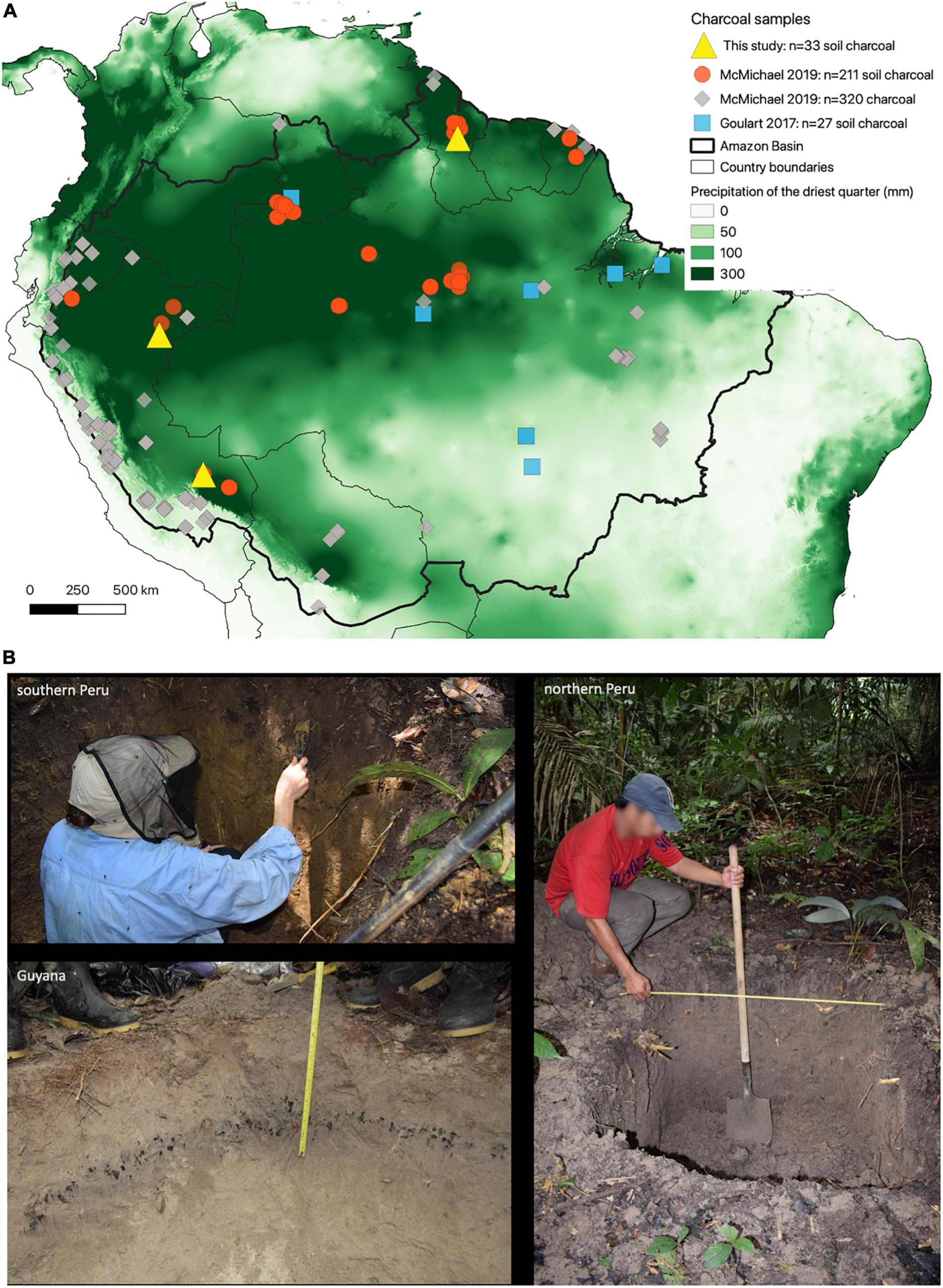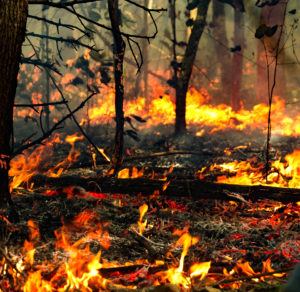
Posted by Ted Feldpausch
4 May 2022In our recent paper, “Forest Fire History in Amazonia Inferred From Intensive Soil Charcoal Sampling and Radiocarbon Dating” published in Frontiers in Forests and Global Change, we examined the history of ancient fire in intact rainforests across Amazonia using radiocarbon dating.
Fire has a historical role in tropical forests related to past climate and ancient land use spanning the Holocene; however, it is unclear from charcoal records how fire varied at different spatiotemporal scales and what sampling strategies are required to determine fire history and their effects. We evaluated fire variation in structurally intact, terra-firme Amazon forests, by intensive soil charcoal sampling from three replicate soil pits in sites in Guyana and northern and southern Peru. We used radiocarbon (14C) measurement to assess (1) locally, how the timing of fires represented in our sample varied across the surface of forest plots and with soil depth, (2) basin-wide, how the age of fires varies across climate and environmental gradients, and (3) how many samples are appropriate when applying the 14C approach to assess the date of last fire.

Fire in southern Amazonia (Photo credit: Paulo Brando)
Considering all 14C dates (n = 33), the most recent fires occurred at a similar time at each of the three sites (median ages: 728–851 cal years BP), indicating that in terms of fire disturbance at least, these forests could be considered old-growth. The number of unique fire events ranged from 1 to 4 per pit and from 4 to 6 per site. Based upon our sampling strategy, the N-Peru site—with the highest annual precipitation—had the most fire events. Median fire return intervals varied from 455 to 2,950 cal years BP among sites. Based on available dates, at least three samples (1 from the top of each of 3 pits) are required for the sampling to have a reasonable likelihood of capturing the most recent fire for forests with no history of a recent fire. The maximum fire return interval for two sites was shorter than the time since the last fire, suggesting that over the past ∼800 years these forests have undergone a longer fire-free period than the past 2,000–3,500 years. Our analysis from terra-firme forest soils helps to improve understanding of changes in fire regime, information necessary to evaluate post-fire legacies on modern vegetation and soil and to calibrate models to predict forest response to fire under climate change.
The full open-access paper can be found here: https://www.frontiersin.org/articles/10.3389/ffgc.2022.815438/full